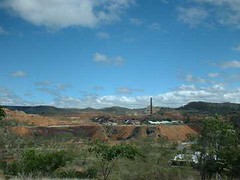flooding out
This morning I read a nifty little piece (book chapter) by Gail Jefferson:
Jefferson, G. (1985). An exercise in the transcription and analysis of laughter. In T. van Dijk (Ed.), Handbook of discourse analysis, Volume 3: Discourse and dialogue (pp. 25-34). London: Academic Press.
In the chapter, Jefferson examines transcription and the analysis of laughter. She introduces the perspective expressed by Sacks in his early work (attention to the mundane and everyday, and "order at all points"), and then examines talk where laughter appears (in the telling of a "dirty joke", for example). Jefferson takes Goffman's notion of laughter "flooding out" i.e. uncontained laughter while another is spealking, and shows that:
"Laughter, then, may not always be a matter of flooding out, to be accounted for as something that happens to a speaker such that he can't help lau:gh, but can be managed as an interactional resource, as a systematic activity that warrants and rewards more than a naming of its occurrence, but close attention to just how and where it occurs." (Jefferson, 1985, p. 34)



